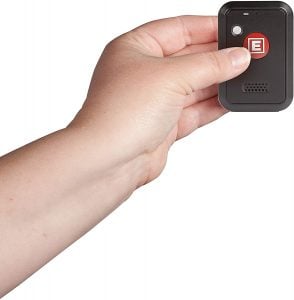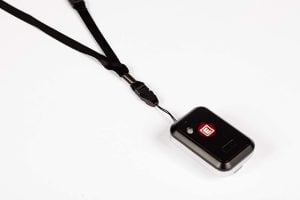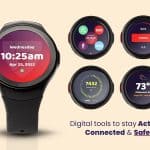
Image credit: Amazon
When it comes to medical alert devices, today’s adult has many more choices than they did just twenty years ago. If you are looking for a no-frills service at a lower cost, FastHelp might be the medical alert system for you. However, you will be giving up a few key features that could come in handy during emergency situations. Here’s what you need to know. You can also compare medical alert features and Life Alert costs on our site.
What Is FastHelp?
FastHelp is a medical alert device that gives the wearer the opportunity to dial 9-1-1 with the push of a red button. Once the button is pushed, it dials 9-1-1 directly on the wearer’s behalf. The FastHelp wearer can then communicate with the 9-1-1 operator through the device.
While the FastHelp medical alert device relies on the wearer to do the communicating with the 9-1-1 operator, there is a GPS system in the device that can narrow down the location. This can be helpful if the wearer is unconscious or unsure of where they are located.
FastHelp medical alert devices are a one-time purchase. This means that there is no activation fee or ongoing monthly service fees.
Pros of FastHelp Medical Alert Device

The FastHelp device can be worn via a lanyard or a belt clip, giving wearers multiple options. Image credit: Amazon
There are certainly benefits to going with a lean and mean device like FastHelp. First of all, there is a low cost up front investment. At less than $200, purchasing the FastHelp medical alert is within many fixed budgets. Also, with no costs after the initial purchase, it’s no wonder why older adults might choose to go with FastHelp. There are also no required contracts.
Beyond the cost, there are other positive considerations of the FastHelp medical alert device. The device itself is very easy to operate. With only two buttons (the emergency call button and the battery test button), users can quickly find the button they need and push it without much effort. The device itself is also waterproof and comes with both a lanyard and a belt clip so users have multiple ways of wearing it.
The device does feature GPS triangulation technology to assist with narrowing down the location when the emergency button is pushed. Further, the device has a one-year warranty and a 30-day money-back guarantee.
The FastHelp device also works anywhere there’s compatible cellular coverage, not just inside the home. This makes it especially attractive to active seniors who spend time in the yard, in their car, or traveling for errands or for recreation.
Cons of FastHelp Medical Alert Device
While the FastHelp system can be a good decision for some cases, there are plenty of drawbacks to choosing the device. The first major concern is that FastHelp does not connect users to a professionally monitored office. While it does call 9-1-1 on the user’s behalf, that is where the service ends.
When adults choose to go with a medical alert device that includes a professionally monitored feature, they can rest assured that when they reach out to those operators, that the operators have immediate access to more information about them. This knowledge can be especially helpful if the user is confused or if they are living with a medically complex condition that emergency responders should know about. Further, professionally monitored systems are also able to contact the family on behalf of the wearer so that the family knows about the incident and if their loved one is headed to a hospital.
Beyond not having a professionally monitored feature, FastHelp also does not have any way of assisting 9-1-1 operators to find the wearer. While the GPS feature in FastHelp can narrow down the location, the 9-1-1 operator relies on more information from the wearer. If the wearer is unconscious, in pain, or confused, they may not be able to give an exact location so that the operator can dispatch the appropriate personnel.
FastHelp also does not have any type of automatic fall detection technology so it does not have the capability to call for help if it senses a fall. The device’s success completely relies on the wearer and their capability to communicate with the 9-1-1 operator at the time of the incident.
Finally, FastHelp does not have any type of caregiver alert feature. This means that wearers cannot include family caregivers in their daily activities through smart apps or be contacted in case of an emergency.
The Bottom Line
While FastHelp offers seniors the opportunity to get a medical alert device with a one-time investment, it does not come without risks and drawbacks. However, with seniors who might be just looking for some added security while they’re on the go or low-income older adults who can’t afford on-going monthly payments, Fasthelp could be an option worth considering.


